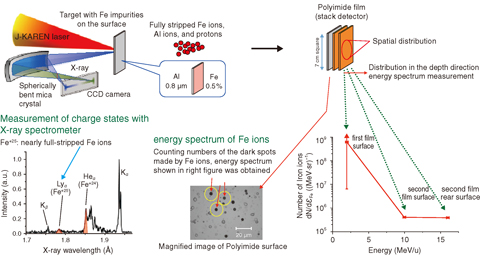
Fig.5-6 Experimental set-up and results of the highly charged Fe ion-acceleration
A laser-driven ion acceleration scheme can provide an acceleration field with a much higher gradient than the conventional method.
At Kansai Photon Science Institute (KPSI), a J-KAREN laser system can provide strong laser pulses with a power of 1015 W. The intensity of such laser pulses can be as high as 1021 Wcm−2, if focused on a ∼1 μm focal spot. The electric field strength of the laser at the focal spot corresponds to ∼100 TV/m. The atoms in the target material irradiated by such laser pulses are instantaneously highly charged. The electrons stripped away from those atoms are accelerated forward and away from the target. As a result, an extremely high-gradient acceleration field is established at the rear side of the target. The field can even efficiently ionize high-Z atoms and can simultaneously accelerate them toward high energy. This laser-driven ion acceleration scheme is more efficient for high-Z elements.
We have performed experiments using laser pulses with an energy of 8 J, duration of 35 fs (full width at half maximum, FWHM), wavelength of 0.8 μm, and typical contrast of 1010. These pulses were focused onto a target with a peak intensity of 1021 Wcm−2. The target was a 0.8-μm-thick aluminum (Al) foil. On its surface, the foil had impurities, mainly comprising iron (Fe). In terms of atomic number density, the Fe-to-Al content ratio was 0.5%. The Fe ions are detectable by Polyimide film, whose response was calibrated in advance with the ion beam from a conventional accelerator. After the laser shot, the Polyimide films were etched to reveal the pits, corresponding to the Polyimide breakdown produced by individual ions. We counted all the pits that originated under Fe ion bombardments and obtained the energy spectrum of the Fe, as shown in Fig.5-6. Based on the depth of the pits inside the stack detector, the ion energy was calculated using the PHITS code. The calculation shows that more than 106 Fe ions per shot were extracted from the target with energies from 0.56 to 0.89 GeV. The ion energy surpassed previous experimental results.
The charge state of Fe ions can be inferred from X-ray spectra, recorded by a focusing spectrometer with spatial resolution (FSSR) that is equipped with a spherically bent mica crystal and a back-illuminated CCD camera. The resulting X-ray spectrum reveals Fe+25 carrying only one electron and Fe+24 carrying two electrons, as shown in Fig.5-6.
We demonstrated the acceleration of GeV highly charged Fe ions from a micron-thick Al foil with an Fe impurity on its surface using a femtosecond 200 TW laser having an 8 J pulse energy.
The usage of laser-driven ion acceleration schemes in existing radio-isotope facilities and heavy ion accelerators can provide a complementary radio isotope source to facilitate measurements of the properties of hitherto inaccessible exotic nuclei.